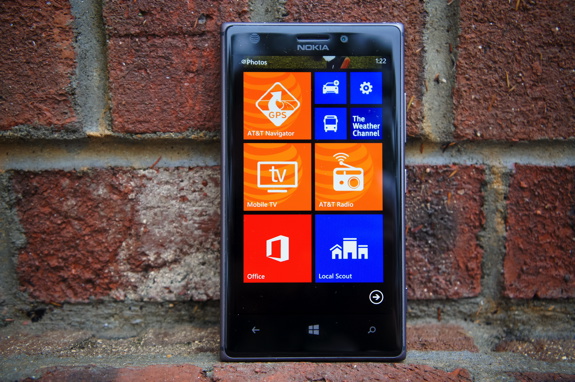Nokia Lumia 925 Smartphone Review
Introduction and Specifications
We're inching closer to the end of an era. Now that Microsoft has acquired Nokia's mobile phone unit, we'll soon see Microsoft-branded handsets rolling out in place of Nokia's own hardware. The company has made a heroic attempt to fight the tide of Apple's growing popularity coupled with the surging share of Android, but currently, Windows Phone holds only around 5% of the global market in smartphones. By and large, the Lumia line has looked fairly uniform to date, relying on polycarbonate frames, bold colors and stand-out camera features to differentiate itself.
The Lumia 925, despite being one of the final Lumias to ship with Nokia's branding, stands as one of the first in the range to truly carve a different path on the design front. It's the first Lumia to roll metal into its design, and while you'll still recognize it as a tried-and-true Lumia at a glance, there's no question that it's cut from a different cloth. Speaking of which, let's have a look at what's inside.
In many ways, the Lumia 925 stands as a gentle refresh of the Lumia 920. It adds a bit of metal to its construction, slims down the overall package, and includes a nice boost on the camera front. Do these additions make it worth the $100-on-contract asking price, and moreover, is Windows Phone 8 truly ready to compete with the latest iPhone and the bevy of high-quality Android phones hitting the market? Read on to find out.
The Lumia 925, despite being one of the final Lumias to ship with Nokia's branding, stands as one of the first in the range to truly carve a different path on the design front. It's the first Lumia to roll metal into its design, and while you'll still recognize it as a tried-and-true Lumia at a glance, there's no question that it's cut from a different cloth. Speaking of which, let's have a look at what's inside.
|
| Processor and memory |
1.5GHz dual-core Qualcomm Snapdragon Processor 1 GB RAM 16 GB internal memory |
| Operating System |
Windows Phone 8 (Amber) |
| Connectivity |
GSM Quad Band/UTMS Tri Band/LTE Dual Band LTE CAT 3 Band 4, and 17, HSPA+ 21 Mbps, UMTS 850/1900/2100 MHz, GSM 850/900/1800/1900 MHz EDGE, GPRS Class 10, UMTS (W-CDMA), HSDPA, LTE Bands 4/17 802.11a/b/g/n Mobile Hotspot Bluetooth 3.0+HS A-GPS NFC GLONASS Qi Wireless Charging (with optional snap-on cover) |
| Ports and expansion |
3.5 mm audio jack microSIM microUSB 2.0 |
| Display |
4.5-inch AMOLED ClearBlack (1,280 x 768) Display |
| Size and weight |
129 x 70.6 x 8.5mm (HxWxD) 139 grams |
| Cameras and multimedia |
1.2 MP Front-Facing Camera 8.7 MP PureView Full HD Rear-Facing Autofocus Camera, Full HD Video Recording |
| Battery |
2,000 mAh
|
| Availability |
AT&T, $99.99 with contract and discounts |
In many ways, the Lumia 925 stands as a gentle refresh of the Lumia 920. It adds a bit of metal to its construction, slims down the overall package, and includes a nice boost on the camera front. Do these additions make it worth the $100-on-contract asking price, and moreover, is Windows Phone 8 truly ready to compete with the latest iPhone and the bevy of high-quality Android phones hitting the market? Read on to find out.







